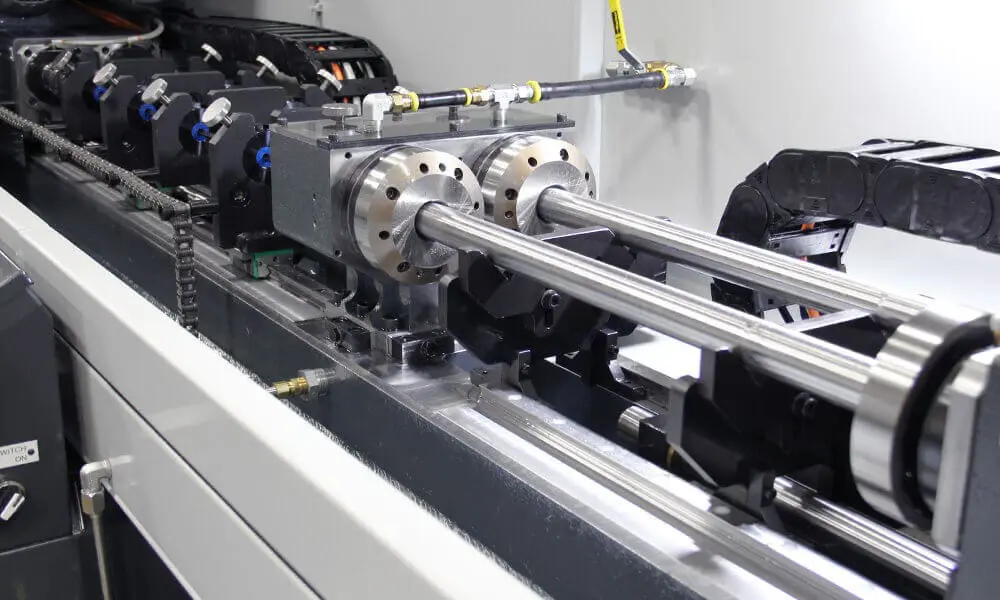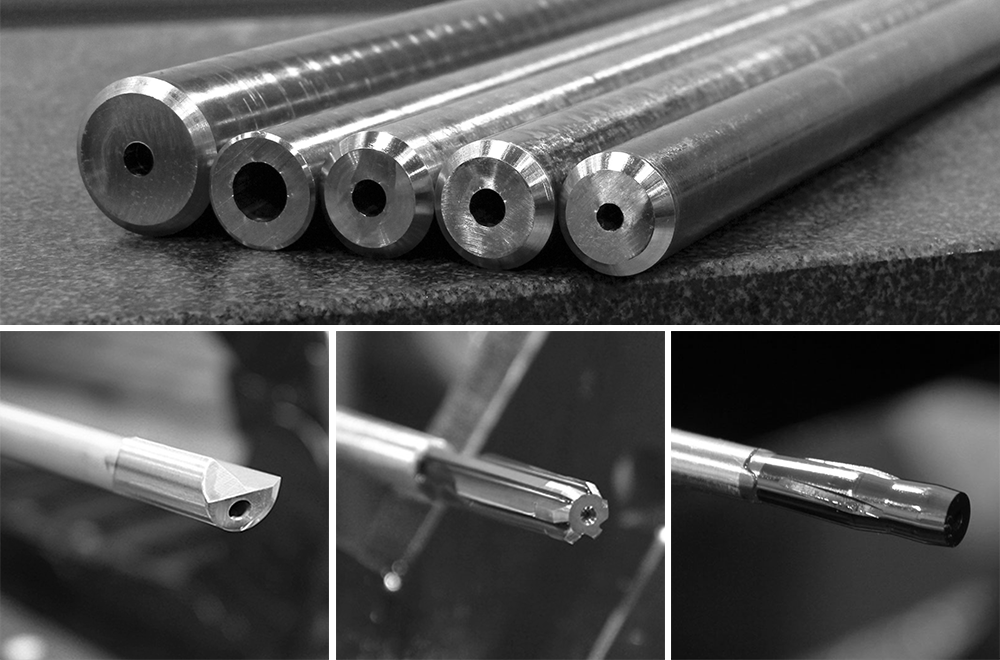
Stress Relief For Your Rifle Barrels (and your operations)
- Posted on
- Ampersand Milwaukee
 Stress relieving, when it follows the button-style barrel rifling process, is a critical firearm manufacturing operation. Button rifling draws a tungsten-carbide cold-forming tool through a drilled and reamed barrel blank. The button compresses and moves the barrel wall material to create rifling grooves in the barrel bore without actually cutting the metal. As such, button rifling requires application of considerable force and induces stress in the barrel walls.
Stress relieving, when it follows the button-style barrel rifling process, is a critical firearm manufacturing operation. Button rifling draws a tungsten-carbide cold-forming tool through a drilled and reamed barrel blank. The button compresses and moves the barrel wall material to create rifling grooves in the barrel bore without actually cutting the metal. As such, button rifling requires application of considerable force and induces stress in the barrel walls.
Stress relieving processes will vary based on many factors, but in general it involves heating a rifled barrel to a high constant temperature that is below the alloy steel barrel’s critical temperature (usually ~1300˚ F). (Higher temperatures change the composition/grain structure of the metal and are considered heat treating.)
In the stress relief process, the barrels are loaded into a vertical rack in an industrial furnace. After the furnace reaches about 200˚F, the furnace chamber atmosphere is replaced by nitrogen from a nitrogen gas generator. The temperature in the furnace is gradually raised to around 1050˚F and held there for an hour. After that, the furnace stops firing and the chamber temperature decreases slowly and steadily, still with a nitrogen gas atmosphere.
The entire stress-relieving cycle encompasses about 16 hours, and it is important that the cooling process occurs in the nitrogen atmosphere because rapid cooling can result in excessive humidity and condensation on the barrels, causing surface oxidation. When the barrels reach a safe handling temperature, they are removed from the furnace and treated with a rust inhibitor.
Two furnace types – sealed vacuum furnaces and non-sealed furnaces – are available for the stress relief process. A non-sealed furnace displaces air from the furnace chamber during purging and consumes a continuous flow of nitrogen while operating. A vacuum furnace, in contrast, draws the air out of the chamber and then replaces it with nitrogen.
The vacuum sealed furnace conserves nitrogen because it doesn’t require continuous purging. The maintained steady-state environment of the sealed furnace enables better control of variables that affect barrel quality and cycle time, and maintenance of consistent temperature during stress relieving in a sealed furnace enables the barrels to be heated and cooled off faster.
A non-sealed furnace will typically cost from about $50,000 to $100,00, while a vacuum furnace may exceed $500,000. Either type of furnace requires a nitrogen source and other ancillary equipment, as well as barrel racks, a rust inhibitor dip tank and other ancillary equipment.
In most cases, it is preferable for a barrel maker to work with an established heat treating provider than to perform stress relieving in-house, especially when initially setting up the operation. Partnering with a heat-treating specialist that uses sealed vacuum furnaces for stress relieving will make expert advice and process guidance immediately available and provide access to high-capacity furnaces as a barrel maker’s markets expand. While stress relieving operations with an unsealed furnace may be a lower-cost option, expanding output and maintaining process consistency can pose problems.
A barrel’s finish will affect its performance as well as its looks. Before stress relieving it is important to remove oils left by prior machining operations. Temperatures of the stress relief process can bake any contaminants on to inner and outer surfaces of a barrel, as well as onto the furnace chamber. Stress relief process capacity is also a consideration, and care should be taken to not overload the furnace. Excessive mass can stall the recommended heat cycle.
The goal of stress relieving in barrel production is producing consistently high quality barrels in a reasonable amount of time with no rejects due to process inconsistencies. Barrel makers that want to deliver best in class products are well-served by seeking out and utilizing experienced, established heat-treating specialists to handle stress relief services in a reliable and economical way.

